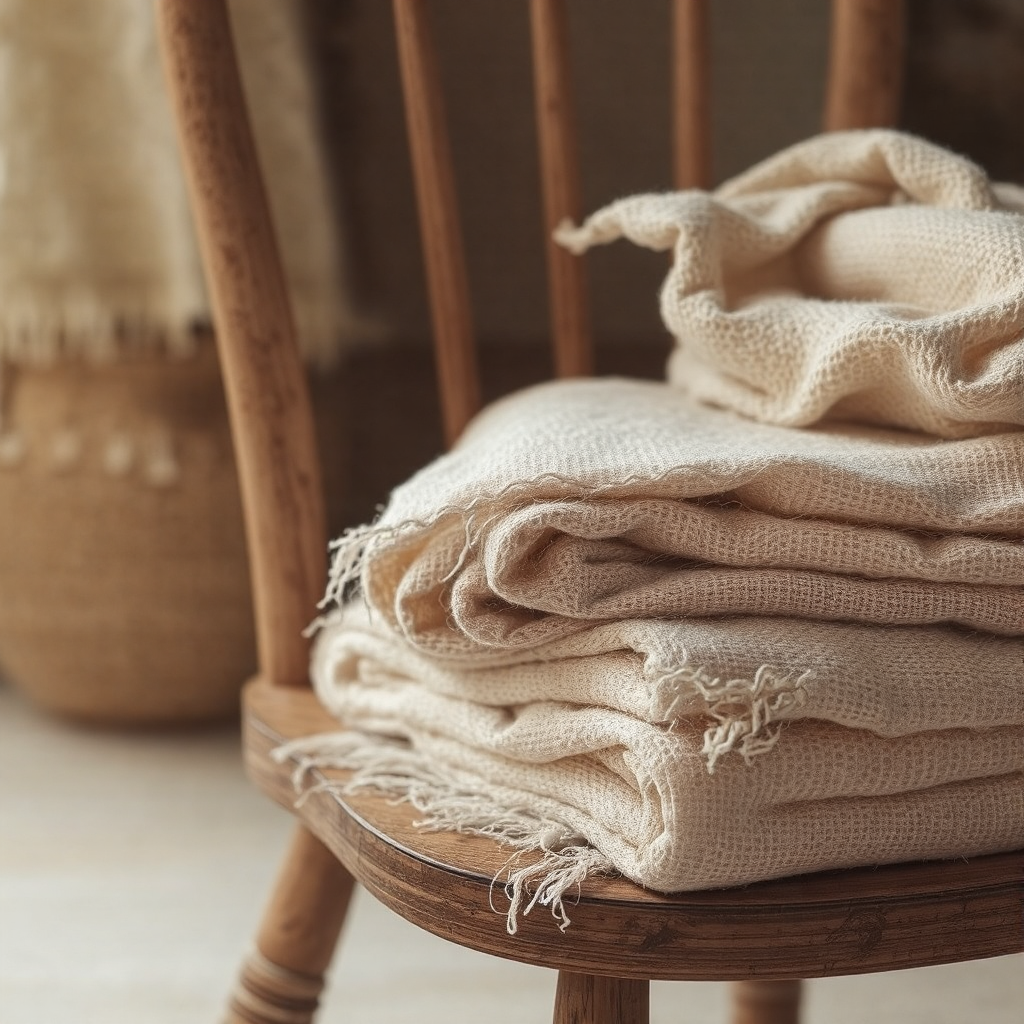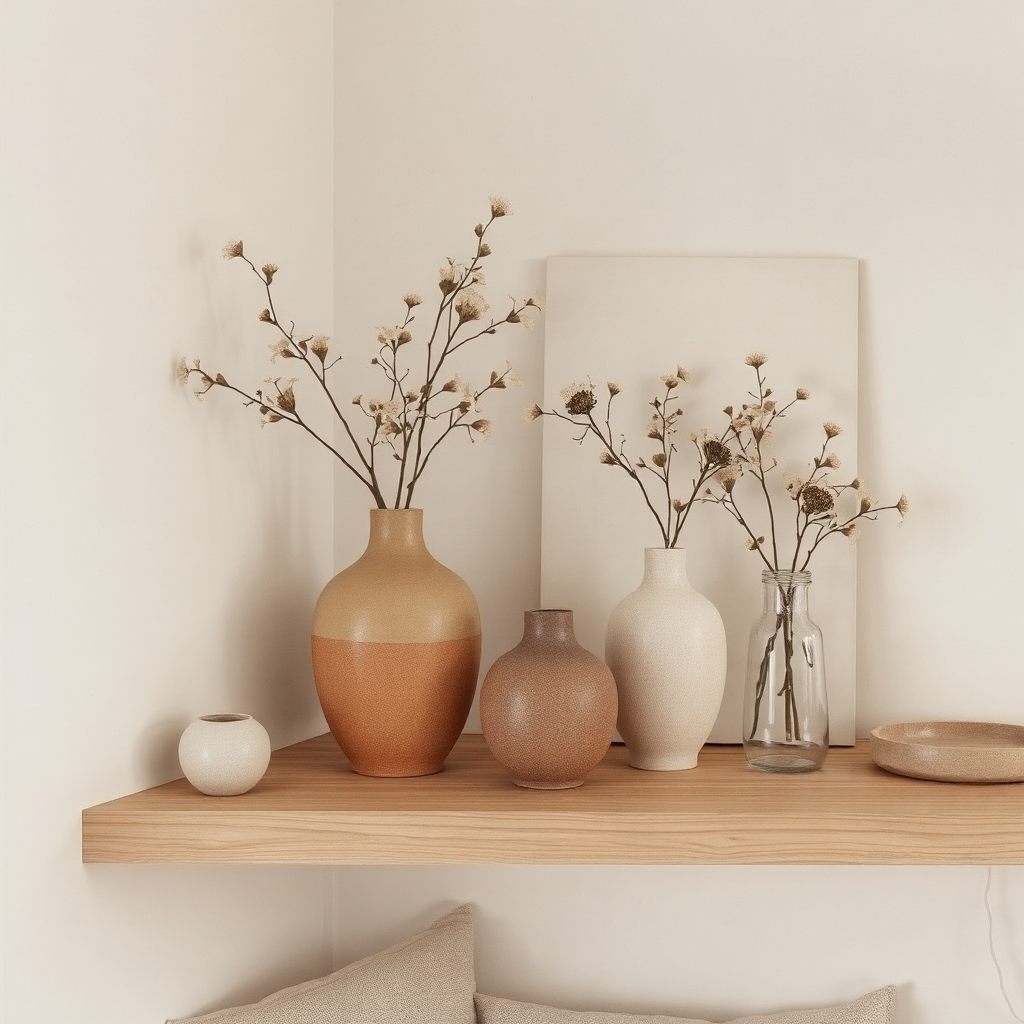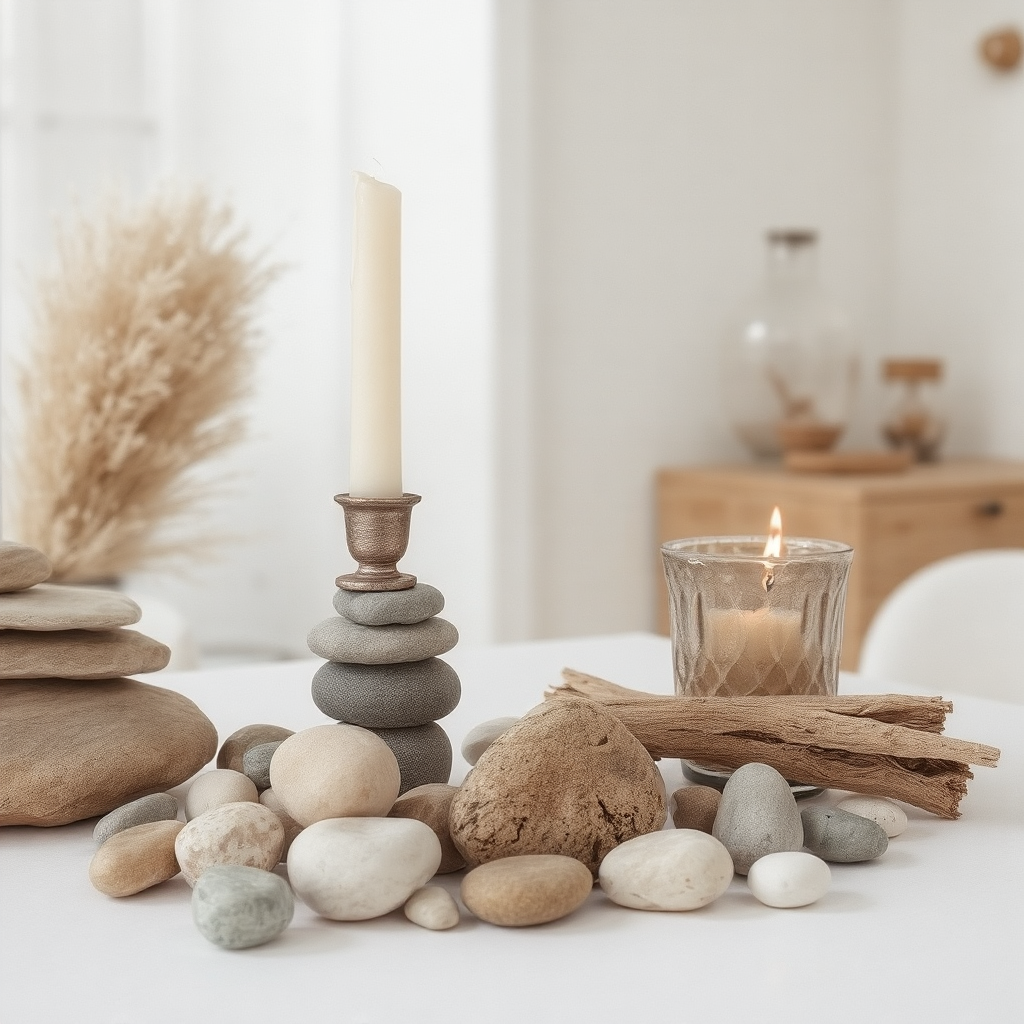Introduction to Scandinavian Design
Scandinavian design, originating from the Nordic countries of Denmark, Sweden, Norway, Finland, and Iceland, is characterized by its emphasis on simplicity, functionality, and minimalism. This design ethos emerged in the early 20th century, gaining prominence in the post-World War II era as a response to the demand for both aesthetic and practical interiors. Central to Scandinavian design is the belief that spaces should foster a sense of calm and tranquility, an invitation to enjoy the natural world and everyday life. Furniture and interiors from this region showcase clean lines, muted hues, and a thoughtful approach to space utilization.
One of the hallmarks of Scandinavian design is minimalism, where every element in a room serves a purpose. Clutter is minimized to create an airy atmosphere, allowing residents to focus on what truly matters. This approach is closely linked to functionality; furniture is often designed to be versatile, accommodating various needs while still providing comfort and user-friendliness. The integration of natural materials, such as wood, wool, and leather, further enhances the aesthetic appeal while ensuring durability and practicality.
In addition to simplicity and functionality, Scandinavian interiors are rooted in a deep respect for nature. Large windows, light-colored walls, and natural materials create a seamless connection between indoor and outdoor spaces. This connection not only enhances the perception of space but also reinforces a sense of peace and harmony. Textures play a crucial role in this design, providing tactile contrasts that add depth and interest without overwhelming the senses. Overall, the principles of Scandinavian design create serene living environments that promote well-being and balance.
Understanding Texture in Interior Design
Texture is a fundamental aspect of interior design that can significantly influence the atmosphere and aesthetic of a space. It encompasses the surface quality of materials and elements utilized in a room, which can be experienced through touch, sight, or the spatial arrangement of objects. In essence, texture adds depth and dimension, transforming a flat environment into a dynamic and inviting space.
There are several forms of texture that designers might consider when crafting an interior. Tactile texture refers to the physical quality of materials, such as the smoothness of glass, the roughness of stone, or the softness of textiles. These characteristics contribute to the sensory experience of a room, inviting occupants to engage with the space on a more personal level. Visual texture, on the other hand, pertains to the perceived surface quality that can be achieved through colors, patterns, and arrangements. For instance, a wall painted in a rich, textured finish can create an impression of depth and complexity, captivating the viewer’s attention without requiring physical interaction.
Spatial texture relates to the arrangement and layering of objects within a space. This form of texture plays a crucial role in creating visual interest and guiding the eye through a room. By thoughtfully arranging furniture, decor items, and materials, designers can establish a sense of rhythm and balance that fosters an engaging environment. The combination of tactile, visual, and spatial textures not only enhances the aesthetic appeal but also impacts the overall mood and functionality of a space.
Ultimately, the integration of various textures allows for a more holistic and rich design experience. It elevates the functionality of a room while also promoting emotional resonance, making texture an invaluable component in achieving harmonious Scandinavian interiors.
The Scandinavian Approach to Texture
Scandinavian design is renowned for its ability to create serene and inviting spaces, and a significant part of this charm lies in the strategic use of texture. Scandinavian designers skillfully incorporate various materials to evoke feelings of warmth and comfort throughout their interiors. By thoughtfully selecting textures, they create environments that are not only aesthetically pleasing but also deeply comforting to the inhabitants.
One of the most prevalent materials in Scandinavian interiors is wood. This natural element serves as a foundation for many designs, bringing with it a sense of warmth and continuity. Whether it manifests in hardwood floors, exposed beams, or wooden furniture, the varied grains and colors of wood create a tactile richness that enhances the emotional comfort of a room. Moreover, wood’s versatility allows it to blend seamlessly with minimalist aesthetics while still offering character and warmth.
Wool is another essential textile that epitomizes the Scandinavian approach to comfort. Used in everything from rugs to throws to upholstery, wool lends soft textures that invite touch and promote coziness. Scandinavian winters can be harsh, and incorporating wool into interiors reflects a practical response to this environment, providing both insulation and a sense of snugness. Popular patterns, such as nubby knits and geometric designs, add visual interest while maintaining simplicity and elegance.
Stone also plays a vital role in creating a grounded atmosphere within Scandinavian homes. Often seen in fireplace surrounds, countertops, or accent walls, natural stone introduces a rugged yet refined element that balances the softness of wood and textiles. The coolness of stone creates a pleasant contrast with the warmth of other materials, contributing to a harmonious design that embodies the Scandinavian ethos of embracing nature.
Through thoughtful integration of wood, wool, and stone, Scandinavian designers cultivate spaces that evoke warmth and tranquility. Each texture enhances the overall ambiance, promoting a feeling of calm that is essential to the Scandinavian living experience. The deliberate simplicity and natural aesthetic of these materials work together to create interiors that resonate with a deep sense of comfort and home.
Layering Textures for Depth and Interest
Texture plays a pivotal role in Scandinavian interiors, contributing to both the aesthetic appeal and the overall atmosphere of a space. The technique of layering textures involves thoughtfully combining a variety of materials, colors, and finishes to create visual depth while maintaining the serene qualities characteristic of Scandinavian design. This method elevates the interior by promoting interest without overwhelming the senses.
To effectively layer textures, begin by selecting a base material that will ground the room. This could be a soft wool or a coarse linen that sets the tone for the rest of the design elements. From this base, introduce other textures that complement it, such as natural woods, metal accents, or even glass. For instance, pairing a plush wool rug with a sleek leather chair establishes a contrast that is inviting yet sophisticated.
Color also plays an essential role in texture layering. A palette of muted, neutral tones is a hallmark of Scandinavian style, making it easier to introduce varied textures without clashing. Incorporating different shades of gray, beige, or soft earth tones allows for a harmonious blend while still offering contrasts in material. Accent pieces, like cushions or throw blankets, made from various fabrics can easily bring in visual interest as well as comfort.
Additionally, consider the finishes of the textures you are layering. Mixing matte and glossy surfaces can create a dynamic interplay. For example, glossy ceramic vases juxtaposed with a rustic wooden table create a captivating focal point that draws the eye. Remember, the goal is to foster a tranquil environment that remains visually engaging; hence, it is wise to limit the variety of textures used to maintain cohesion. By thoughtfully layering textures, you can achieve a refined yet inviting Scandinavian interior that communicates both depth and serenity.
The Role of Color in Textured Spaces
In Scandinavian interiors, the relationship between color and texture plays a pivotal role in creating cohesive and tranquil environments. This design philosophy typically embraces a palette dominated by neutral hues such as whites, grays, and soft beiges. These understated colors are not just aesthetically pleasing; they also serve to enhance the natural textures that define Scandinavian design. By utilizing a neutral color scheme, the visual focus is directed towards the rich textures present in furniture, fabrics, and architectural elements.
The organic materials often found in Scandinavian interiors—such as wood, wool, and stone—are accentuated by these muted tones, allowing their innate qualities to shine. For instance, a warm-toned wooden table in a soft gray space not only provides warmth but also adds depth to the overall design. This interaction between color and texture invites a sense of harmony, which is fundamental in establishing a calm atmosphere within these interiors.
Psychologically, neutral colors are known to evoke feelings of serenity and comfort. They can foster a sense of connection to the natural environment, which is a core principle of Scandinavian design. By minimizing distractions and allowing the focus to remain on the textures, inhabitants are offered a peaceful retreat from the chaos of everyday life. Colors such as pale blues or muted greens can occasionally be used to introduce subtle accents, enhancing the textured aspects of spaces without overwhelming them.
In conclusion, the symbiotic relationship between color and texture in Scandinavian interiors creates a tranquil atmosphere that promotes relaxation. By focusing on neutral tones and natural textures, these spaces achieve a refined aesthetic that resonates with the principles of simplicity and calm inherent in Scandinavian design.
Textiles that Enhance Comfort and Style
In Scandinavian interiors, textiles play a pivotal role in cultivating both comfort and style, aligning seamlessly with the region’s design philosophy that emphasizes functionality and simplicity. The choice of fabrics can significantly influence the atmosphere of a space, providing warmth and a sense of coziness that is characteristic of Scandinavian homes. Popular textile options, such as linen, cotton, and knitted accessories, not only offer practicality but also invite tactile experiences that enhance overall aesthetic appeal.
Linen, recognized for its durability and breathability, stands out as a preferred material in Scandinavian design. This natural fiber contributes to a relaxed yet sophisticated ambiance; it possesses a natural texture that adds depth to interiors. Linen drapes beautifully, whether in the form of curtains, upholstery, or decorative throws, seamlessly blending with neutral palettes while fostering a sense of ease. Its eco-friendly nature further supports the Scandinavian commitment to sustainability, making it a desirable choice for conscientious consumers.
Cotton is another staple that finds prominence in Scandinavian interiors. Its versatility enables countless applications—from bedding and cushions to table linens and wall hangings. Cotton textiles can bring a clean, crisp look to a space while retaining softness and comfort. The natural flexibility of cotton allows it to be approached in various styles, whether through geometric patterns or organic prints, adding subtle visual interest while maintaining a calm atmosphere.
Moreover, knitted accessories, such as woolen blankets and chunky pillows, significantly contribute to the tactile richness of Scandinavian rooms. These elements serve not just as decorative items but also as functional pieces that invite relaxation and warmth, embodying the essence of ‘hygge’—the Danish concept of coziness. Collectively, these textiles foster a crafted environment that balances comfort with elegant simplicity, essential characteristics of Scandinavian interior design.
The Influence of Nature on Textural Choices
Scandinavian design is renowned for its ability to create serene and tranquil living spaces, distinctly influenced by the natural environment. Designers in this region often draw upon organic textures found in nature, seamlessly incorporating elements that evoke a sense of calm and connection to the outdoors. The interplay of materials such as wood, stone, and various plant life plays a crucial role in defining the overall aesthetic of Scandinavian interiors.
Wood, in particular, serves as a fundamental component in achieving this aesthetic. The natural grain of timber can vary greatly, with each piece exhibiting unique characteristics that add warmth and organic beauty to a space. From raw, unfinished surfaces to smooth, polished finishes, the versatility of wood allows Scandinavian designers to establish a foundation that harmonizes with other materials. Additionally, the use of locally sourced woods not only embraces sustainability but also creates a direct link between the interior space and the surrounding landscape, enhancing the overall environment.
Stone surfaces are another vital element that contributes to the textural variety within Scandinavian interiors. Whether it is through the use of slate, granite, or marble, stone adds a sense of permanence and grounding to living spaces. The rustic quality of unrefined stone contrasts beautifully with softer materials, representing the bountiful resources found in nature. This incorporation of stone not only enhances aesthetic appeal but also signifies durability and resilience, characteristics that are highly valued in Scandinavian culture.
Moreover, integrating plant life into interior design further enriches these spaces with organic textures. Indoor plants not only purify the air but also instill a vivid connection to the landscape outside. The lush greenery serves as a visual cue that reinforces the natural inspirations behind Scandinavian design, enabling a holistic approach that nurtures both comfort and well-being. Through these natural elements, Scandinavian interiors create environments that foster tranquility and promote a deeper appreciation for the world around us.
Creating a Textural Balance
Achieving a harmonious balance of textures in Scandinavian interiors plays a pivotal role in creating spaces that are not only visually appealing but also calming and inviting. The essence of Scandinavian design lies in the thoughtful combination of materials, where different textures coexist to enhance the overall aesthetic and comfort of a room. Incorporating a variety of textures can lend depth to a space, effectively transforming it into a serene environment.
To begin with, it is essential to select a foundational texture that sets the tone for the entire room. Natural materials such as wood, stone, and wool are commonly used in Scandinavian interiors, providing a warm and organic base. For instance, wooden flooring or exposed beams can be complemented with soft textiles like linen or cotton in cushions and throws. This contrast creates a pleasing visual dialogue, inviting both touch and observation.
When layering different materials, consider the principles of scale and proportion. It is crucial to find a balance that avoids overwhelming the senses. For example, a plush velvet sofa can introduce a luxurious feel, while a knitted wool throw adds coziness without detracting from the sofa’s elegance. By integrating both light and heavy textures, such as combining smooth surfaces with rough finishes, a dynamic yet restful atmosphere can be established.
Furthermore, color plays a significant role in textural balance. Soft, neutral palettes typically characteristic of Scandinavian design allow textures to shine. Shades of white, beige, and pale greys can serve as a backdrop, enhancing the visibility of various textures without competing for attention. Decorative elements, such as ceramic vases or woven baskets, can further enrich the tactile experience while maintaining coherence in design.
In conclusion, creating a textural balance in Scandinavian interiors requires careful selection and layering of materials that enhance both visual appeal and a calming ambiance. By thoughtfully considering various textures and their relationships, one can achieve a harmonious environment that embodies the essence of Scandinavian design.
Conclusion: Embracing Texture for Tranquility
In Scandinavian interiors, texture plays a vital role in creating spaces that resonate with tranquility and comfort. The integration of various materials, such as wood, textiles, and natural fibers, fosters a serene atmosphere that is both inviting and aesthetically pleasing. This design philosophy emphasizes the importance of tactile experiences, where each surface is intentionally curated to enhance the overall environment.
One of the key takeaways from exploring the significance of texture is its ability to soften the often minimalistic elements characteristic of Scandinavian design. By introducing a diverse range of textures, homeowners can achieve a balance that is visually appealing while promoting a sense of well-being. Soft fabrics, such as wool and cotton, combined with the warmth of wood or the coolness of stone, create a harmonious contrast that enriches the living experience.
Furthermore, the mindful selection of textures can influence not only the aesthetic but also the emotional response within a space. Textures engage the senses in a way that infuses liveliness into the home, making it a refuge for relaxation and introspection. Soft furnishings and cozy accents encourage restful living while still adhering to the principles of Scandinavian simplicity. As such, introducing thoughtful textures can significantly enhance the quality of life by contributing to a calming and peaceful environment.
As you consider ways to incorporate Scandinavian design elements into your own home, reflect on how different materials can be layered to create depth and interest. Whether it’s through the elegant use of textiles, the strategic placement of natural elements, or the thoughtful arrangement of furniture, embracing texture is essential for achieving a tranquil sanctuary. Ultimately, the careful balance of textures can transform your living spaces into havens of peace and comfort, embodying the essence of Scandinavian interiors.



